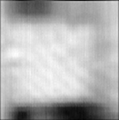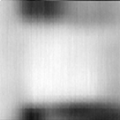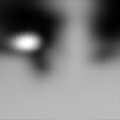Photographing the invisible - a camera for microwaves
Inspired to follow a childhood dream.
RF camera and radio telescope - Table of Contents
Looking back at my last few posts, it seems that all I do is to piddle with basic things and write unending texts about the obvious. I’m also not doing what I really started this blog for- namely, to attract attention to the software I’ve written and posted in my GitHub repositories.
To get things back on the track I intended to go down, I’m going to introduce one of my bigger projects. First just an overview, then I’ll go into the details.
I have a thing that can loosely be called a microwave camera. It detects radio frequency energy between 10 and 12 gigahertz, and makes a visible image.
As with many of the things I do, this project started with a question on the Electrical Engineering Stack Exchange. That question was specifically about 2.4GHz, and it led me to this question over on the Photography Stack Exchange. From there I ended up on this site, which is unfortunately now only available on the WayBack Machine without the images. That blog post was about using satellite TV equipment to make pictures of ambient 11GHz RF. All of the work in making the one posted image was done by hand - literally aiming a satellite TV dish and making measurements hundreds of times. I thought it ought to be possible to automate the process, and proceeded to build a gadget to do so.
The result is this:
| Microwave camera |
|---|
 |
That is a mechanical monstrosity that can rotate about 20 degrees horizontally, and tilt up and down by about 20 degrees. It has two heavy duty servo motors like you will find in remote controlled cars. It also has an RF level detector to measure the microwave intensity. The whole shebang is driven by a simple Arduino program that reads the RF level using a 24 bit analog to digital converter, drives the servos, and switches the various bands and polarization options that a satellite TV LNB provides. The Arduino talks to a program on my PC, and the PC software makes images.
That’s the whole thing in a nutshell. I’m going to break it down over the next few blog posts, and explain how and why I built things the way they are - and how it all works together.
Ultimately, I want to use it as a radio telescope. That’s the reason the PC software is named Grote and the Arduino software is named Karl. That’s for Grote Reber and Karl Jansky. Grote Reber made the first radio survey and map of the sky, and Karl Jansky first discovered that there were signals from space.
Here’s a couple of pictures of ambient RF made in my work room:
| Window by microwaves | Window with different polarization | Window by regular light |
|---|---|---|
 |
 |
 |
A few things are immediately clear from those pictures:
- The curtains are transparent at 12GHz
- There’s some kind of polarization effect going on with the window.
- There’s some kind of diffraction effect going on along the window sill at the bottom of the picture.
- The material and construction of the wall and window influence the reflection and emmission of RF.
Investigating each of those effects could absorb hours (or days) in measurement and experiments.
Note that I do not use any kind of emitter in making these images. It is all done with just what is present normally.
This an image made in my backyard. It shows the moon through a break in the trees and shrubs.
| Moon |
|---|
 |
That’s somewhat encouraging for my radio telescope plans.
You may have noticed that the images are rather small. That’s the native resolution of the machine. The servos have a movement range of 120 degrees, and the software can only guide it by single degrees. That makes the images end up 120 pixels wide by 120 pixels high. 14400 pixels in all. I’d really not like to do that by hand. Despite the servos and computers, it currently takes 20 minutes to make an image.
The radio telescope aspect of this is what got me really hooked on starting this project.
I first read about Grote Reber in a book borrowed from a school library something like forty years ago. I was maybe 10 years old at the time, maybe younger. I loved the idea that you could “see” things that were invisible to the eye, and fascinated by astronomy as well. Being a realistic kind of kid, I looked at the equipment it would take and how large it would have to be, then calculated that it would take longer than the estimated life of the universe for me to save up enough to build it from my allowance and money earned mowing lawns. That kind of put a damper on the idea, and the idea got pushed to the back of my mind where it stayed for a very long time. Then came Stack Exchange and reminded me of it, and here we are.
I’m going to let that be enough for today. The next time around, I’ll explain the mechanical parts.